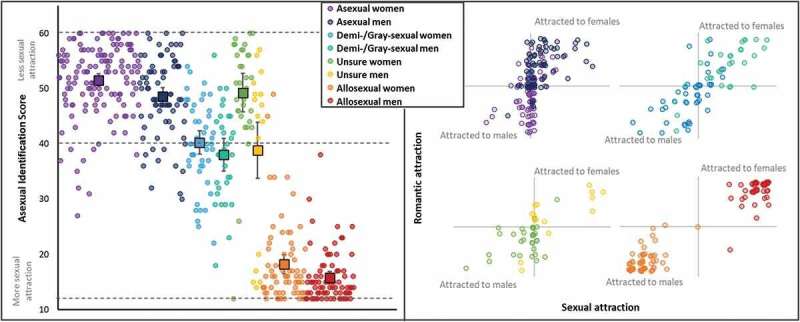This article has been reviewed according to Science X's editorial process and policies. Editors have highlighted the following attributes while ensuring the content's credibility:
fact-checked
peer-reviewed publication
trusted source
proofread
Q&A: The role of attraction in our partner preferences

Research Associate Meike Scheller, from Durham University's Psychology Department, tells us about her research into the diverse types and levels of attraction that drive our partner choices, and what we can learn from other sexual orientations and communities.
Q. Tell us about your recent research study.
A. Deciding who we choose as a life partner is possibly one of the most important decisions we make in our life. It influences our own lives, and sometimes even the next generations, just like the choices of our parents, grandparents etc, affected us.
For a decision that is so crucial, it's surprising that we often don't consciously think about why we prefer one person over another. However, consciously, and unconsciously, most of us carry a list of traits that we're looking for in a partner in our heads. Notably, a lot of these preferred traits that lead to choosing a specific partner have been shaped by our biological and cultural evolution.
Our recent study tests whether our evolved attraction systems can explain why we're interested in certain partner characteristics today. We also explored that some people only experience certain forms of attraction, and how this may help us understand its varying types and degrees.
Q. What triggers our attraction?
A. Attraction typically triggers a cascade of psychological and physiological responses, for instance, constantly thinking about the person, wanting to be close to them, getting weak knees, sweaty hands or that fluttery feeling in the stomach. We don't actively control or choose to experience attraction, but it happens automatically in response to certain people and characteristics.
Our research looked at how our preferences for partner characteristics, be it physical attractiveness or social status and resource provision, differ between men and women, and whether these differences can be explained by the degree and type of attraction we feel towards others.
Q. Can you explain the various types and levels of attraction?
A. Attraction comes in many forms. When we think about attraction, we often think about the desire for physical intimacy and sexual interactions with the other person, or for romantic contact and a deep emotional connection with them. Many people don't distinguish between these forms of attraction, as they often experience them together. However, some individuals can experience them independently, and in very distinct ways.
For instance, asexual people don't experience sexual attraction towards others but can still be romantically attracted to them. Similarly, aromantic individuals can experience sexual, but not romantic attraction. It's also possible to experience sexual or romantic attraction occasionally, or only with people with whom we share a strong emotional bond. Contrary to what most people believe many asexual individuals that experience romantic attraction have an interest in forming romantic relationships with others.
Other forms of attraction can include sensual attraction, a desire to interact with others in a physical, but non-sexual way, emotional attraction, a desire to engage in emotionally intimate behaviors, or even intellectual attraction, the desire to engage with another person in exchanging thoughts and discussion.
Just like there are differences in the strength of the various forms of attraction, the orientation of our attraction towards specific genders can differ starkly. For instance, it's possible to feel more sexually attracted to men, but be more romantically attracted to women. For bisexual or pansexual people, the idea of a different degree of sexual and romantic attraction towards the same or another gender is not such an uncommon experience.
Q. What did you find about the role of attraction?
A. We found that both the strength and orientation of sexual and romantic attraction were aligned in a lot of individuals that experience high sexual attraction. Meaning, individuals that were strongly sexually attracted were also strongly romantically attracted.
However, in individuals where sexual attraction was reduced, we saw that these systems can act independently of each other—suggesting that the two attraction systems can govern partner preferences to different degrees. Depending on the type of relationship that's desired the differences in partner preferences between men and women, an evolved feature of partner choice, were reduced. This suggests that the different attraction systems evolved to support and influence our partner choices today.
The research is published in The Journal of Sex Research.
More information: Meike Scheller et al, The Role of Sexual and Romantic Attraction in Human Mate Preferences, The Journal of Sex Research (2023). DOI: 10.1080/00224499.2023.2176811



















